Air Conditioning Unit - Some Factors When Buying
Most of us depend upon our air conditioning system to maintain an even temperature during the warmer times of the year. When your A/C is working correctly, regular maintenance should ensure that you receive optimum comfort in your living space for well over a decade. There are many reasons why you might want to consider repairing or replacing your air conditioning system.
- Most air conditioning systems are not meant to last for more than 10 to 15 years. Parts wear out, contaminants build-up, and technology has advanced to the point where it makes sense to replace the unit.
- Generally, heating and cooling costs account for between 40% and 50% of utility bills. If your electric bill continues to rise without an obvious cause, it may be because your unit is aging and not working effectively.
- Freon is a refrigerant that was used in older A/C units. Because Freon damages the environment, it is being phased out and replace with safer options.
- If dust is building up quickly in your home, it could indicate there are leaks in your ductwork. These leaks reduce the efficiency of your system and increase the amount of energy required to run it.
- One function of your air conditioner is to reduce the humidity within your home. Excessive humidity on a regular basis could mean that your unit needs to be repaired or replaced.
- Some questions that you need to ask yourself include:
- Is this the first air conditioning unit installed in your home?
- If you have an existing A/C unit, can any part of it be salvaged?
- Will you be replacing an existing central air unit or a series of one or more window units?
- How much money are you willing to spend on the project?
- Have there been any changes to your home since the old A/C was installed?
Air Conditioning Terminology
 Before we go any further, let’s define some of the terms that you’ll need to know when discussing your central air conditioning unit.
Before we go any further, let’s define some of the terms that you’ll need to know when discussing your central air conditioning unit.Air Flow: This is a measure of how much air moves through your duct system. An air conditioner is designed, in general, to move around 400 cubic feet per minute per ton of air conditioner capacity.
This number varies according to the climate: in dry climates, it will be higher, and in humid areas, it will be lower.
BTU (British Thermal Unit): A BTU measures the amount of energy needed to cool or heat a pound of water by 1°F. This is often used to advertise an air conditioner's cooling capacity. Compressor: This device is the part that is outside of your air conditioning unit. It controls the temperature and pressure of the refrigerant. Most of the noise generated by your air conditioner is caused by the compressor. Condenser Coil: The condenser is contained within the large, square box located outside your home. Freon that has absorbed heat in the evaporator coils now goes to this unit, where a large fan removes the excess heat and a compressor condenses the freon/refrigerant before sending it back into the house. Evaporator Coil: Evaporator coils are located inside or near the blower fan of the air conditioner. They are made of a metal such as copper, aluminum, or steel to conduct heat easily, and are tubes bent into U-shapes. This is the part of the system where the refrigerant absorbs heat, which results in cold air. SEER (Seasonal Energy Efficiency Ratio): SEER is used to measure the efficiency rating for central air conditioners. The higher the rating, the better the energy efficiency of the unit. Split System: This is an air conditioning system with one part, the condensing unit, outside your home, and one part, the air handler, and the evaporator coil, inside your home. They are connected by refrigerant lines. Tons: This doesn’t measure the weight of the air conditioning unit; it measures the capacity. A ton of A/C capacity equals 12,000 BTUs/hour. For example, two tons of air conditioning removes 24,000 BTU from your home every hour that it runs. Note this is a simplified explanation, and the actual calculation is more complicated.Why Central Air Conditioning?
 If you’re currently using window-mounted A/C units that need to be replaced, you’ll need to decide whether to install a central air conditioning or replace the window units. There are a lot of moving parts, liquids, and environmental factors that cause air conditioners to slowly become less effective over time.
If you’re currently using window-mounted A/C units that need to be replaced, you’ll need to decide whether to install a central air conditioning or replace the window units. There are a lot of moving parts, liquids, and environmental factors that cause air conditioners to slowly become less effective over time. Window units have the disadvantage in that they are less controllable and only cool a single room or area of your home. They tend to use large amounts of energy, and if they are not sized properly, they may not do a very good job of cooling.
Central air conditioning is a superior albeit more expensive option for many reasons.
- They tend to last longer.
- Instead of cooling a single room, a central air conditioner cools your entire home and is thus, more efficient.
- Central air conditioning is more powerful than window units.
- You have greater control over the temperature and other factors with central air conditioning.
The main advantage of central air conditioning is that it is designed to cool your entire home from a central location. Since the evaporation unit is located inside your home in the condensation unit is located outside, the system is more efficient and has greater power.
Better control of the temperature
Modern central air conditioning units use a programmable thermostat which enables you to set temperatures according to a schedule. For example, if nobody is home during the day, you could program it to a higher temperature during that time. You can then schedule it to reduce the temperature an hour before you come home. This can reduce your energy costs.
Well-designed central air conditioning will keep a constant temperature from room to room in your home. This can be accomplished with multiple thermostats, opening and closing the supply and return registers to adjust the airflow.
But what about the cost?
Installing a new air conditioning system can be a large investment in money, time for installation, and inconvenience while it’s being installed. If you’re installing a new unit, then ductwork and other infrastructure will need to be added to your home. On the other hand, if you’re upgrading an existing unit, then the ductwork will already be in place which will reduce the cost inconvenience.
Some of the things that need to be considered include:
- Are you concerned about energy efficiency? Central air-conditioning uses less energy in general.
- Are you looking for a long-term investment or short-term solution?
- Are you interested in maintaining an even temperature throughout your home?
- Are you able to obtain financing to defer the cost of the unit and installation?

Energy Costs
According to the Rocky Mountain Institute, nearly 5% of energy use in the United States is a result of air conditioning. Older air-conditioning units are less energy efficient, which means that not only do they result in a higher energy bill, but they contribute more towards climate change.On the other hand, spending a little extra money to get an energy-efficient air conditioning system will save you thousands of dollars throughout its lifetime in energy and maintenance costs. Additionally, since these use less electricity, their effect on the environment is reduced.
Thus, it’s an important decision to pay a little more upfront for the efficient unit, which will save you money over the longer-term on your monthly electric bill. In fact, you can reduce your home energy usage by 20% to 50% if you select higher efficiency units. Your AirZero A/C specialist can help you work out what is the best solution for your circumstances.
How Central Air Conditioning Works
No, it’s not magic. Keeping your house cool might seem like magic, especially on very hot days, but air conditioning actually works on sound scientific principles.
You don’t need to be an expert to understand the basics of how air conditioning operates; but by understanding the process, you can make better decisions about which unit to buy and how to get it installed.
Central air works by using a refrigerant to absorb heat out of the house, rejecting the heat from the refrigerant outside, and then pumping it back inside. Outside air is not pumped into your home, nor is inside air pumped into the environment.
The warm air that’s inside your home is sucked into ducts, passing through an air filter that is designed to remove any kind of particles. From there, a fan blows this air through a cooling evaporator coil.
This removes the water, known as dehumidifying, and uses a refrigerant such as R-410A to remove the heat from the air. (In the past, central air conditioning used R-22, but that is no longer used because of environmental concerns.)
This cooled air is then directed back into the home through a series of ducts. The condensation and heat are pumped to an outdoor unit. The condensation is removed via drain lines, and the heat is bled into the air.
Determining Your Air Conditioning Needs
 Now that you have a basic understanding of how central air conditioning works, let’s look at what you need to know if you’re considering installing or replacing one.
Now that you have a basic understanding of how central air conditioning works, let’s look at what you need to know if you’re considering installing or replacing one. - The size of the space that you need to cool.
- The type of structure that needs to be cooled.
- The number of windows, and their position towards the sun.
- The number of doors in the structure.
- The weather in the local environment. For example, a wet, humid environment such as Florida will have different needs than the dryness of the desert.
- The type of roof and the roofing material.
- The layout and size of the ductwork.
- How well your home is insulated.
Additionally, if you have an existing unit, it will need to be inspected to determine what, if anything, can be salvaged and utilized on the new, upgraded system.
The Size of a Central A/C System
Your representative from Air Zero will help you determine what size central air conditioning you need for your home. They are experts at examining all the factors that affect the temperature of your home year-round and can help you calculate the system and size that best suits your home environment.
It’s important that you know the square footage of your home so that the correct size central air conditioning system can be installed. A home of 1000 square feet will require significantly less cooling, all other things being equal, then a 3000-square foot area.
If you don’t know the square footage, measure the length and the width and multiply the two together. This will give you the total number of square feet. Of course, odd-shaped homes, multiple stories, and other factors can change the number of square feet.
The purpose of these calculations is to determine the tonnage of your A/C unit. One ton means an air conditioner can cool 12,000 BTUs per hour. A BTU the calculation of the energy needed to heat or cool a pound of water by 1°F.
Air conditioners in homes range from 1.5 tons to 5 tons and increase by half ton increments. An AC unit over 5 tons is for commercial purposes and is not available to residential homes. If your home is large enough to require more than 5 tons of air conditioning, then you’ll need more than one unit.
Do you Want a Single Stage or Multistage AC System?
Another choice that you will need to make is; Do you want a single or multistage air conditioning system? Most modern systems are multistage, but you can still get single-stage systems if you want.
Single-stage air conditioning is either on or off. When you turn it on, the system runs at full speed. When you turn it off, there is no air flowing. These systems will cool your home just fine, but they are relatively inflexible.
Multistage air conditioning systems give you multiple speeds and settings, which lets you customize your comfort within your home. Thus, on hot days, the system can operate at a higher capacity, while on milder days it will operate at a lower level.
If you live in a warmer location, a single-stage air conditioning system will use a larger amount of electricity since it will be on most of the time. These can create large electric bills and proved to be very costly very quickly.
Multistage systems regulate the use of power to cool your home in a more even manner. Instead of blasting cool air at one level whenever it’s warm, a multistage system runs at the level appropriate to the temperature. This tends to keep your home temperature at a more even level and reduces the amount of power your unit uses.
In general, the multistage system will save you significant money over the longer-term since it will use less electricity. Additionally, single-stage systems tend to require higher maintenance since they are running at full blast most of the time.What’s Important About Air Conditioner Efficiency

Newer air-conditioners tend to be more efficient than older models, which saves money in energy and maintenance. Additionally, the better you maintain your air conditioner, the better it will perform, and the more you will save on your electric bill.
There are three ratings that measure the cooling efficiency of air-conditioners.
SEER (Seasonal Energy Efficiency Ratio)This rating gives a measurement of how efficient the cooling is of an air conditioner. Divide the total cooling output by the amount of energy consumed within a specific time. BTUs (or tons) are used to measure the cooling output. Watt-hours are used to measure energy input. The result of this calculation is the SEER rating of your air conditioning unit. A higher number means the unit is more efficient. Note that a SEER rating is a maximum rating, which means the air conditioning unit can be as high as the SEER value, not that it is always that value.
Federal regulations currently require A/C units manufactured after 2005 have a minimum SEER rating of 13. This is changed from the older standard which required a rating of 9.
Replacing an older system has been rated at nine or lower with a unit rated at 13 can reduce your power consumption by as much as 30% which can mean a savings of several hundred dollars per year in energy costs.
In other areas of the country, such as the southeast, even higher ratings may be required.
HSPF (Heating Seasonal Performance Factor)The HSPF rating is used to measure the heating efficiency. Divide the total heat output by the amount of energy that is consumed during a specified period. This is determined by dividing the output in BTUs, or tons, by the input in watt-hours. A higher rating indicates higher efficiency. A rating of greater than or equal to eight it is considered high-efficiency and might result in a US energy tax credit.
Currently, regulations require A/C units manufactured after 2005 to rate at least 7.74 HSPF. In the past, units could be manufactured with ratings of 6.8 and meet regulations. It’s not uncommon to find newer, more efficient air conditioners to come in with a rating of nine or even 10.
Energy StarA standard that is older than SEER and HSPF is called Energy Star. This standard was established by the Air Conditioning, Heating, and Refrigeration Institute to measure the energy efficiency of consumer products made in the United States. Products that bear the Energy Star trademark generally require 20% to 30% less energy than mandated by federal standards in the United States. Air conditioning that is certified under Energy Star must be at least 10% more efficient than required by federal law.
Energy Star was originally created for computer and printer devices, but it was expanded in 1995 to include heating and cooling systems. The standard requires that heating and cooling products be 10% more energy-efficient than required by federal law.
This can be achieved by better equipment, as well as by efficiency techniques during installation. These include:
- Sealing doors, windows, and air ducts.
- Use of a programmable thermostat.
- Equipment that is installed properly with the appropriate standards.
- Air filters must be changed on a regular basis.
- Annually, the equipment must be serviced.
It is not required to purchase an Energy Star compliant central air conditioning system. This is an optional standard in which manufacturers and sellers voluntarily participate. However, getting this kind of system installed increases your energy efficiency, helps the environment, and reduces your energy bills monthly.
What's a typical air conditioning unit?
 Air-conditioners consist of several parts that are connected together in order to efficiently cool and/or warm your home. Each of these parts has a different function, and they are all designed to work together.
Air-conditioners consist of several parts that are connected together in order to efficiently cool and/or warm your home. Each of these parts has a different function, and they are all designed to work together.Ductwork: Ducts are used to transport air throughout your house, either to or from your air conditioning unit. Central air conditioning is a closed system, and the ducts transport the air from your rooms back to your A/C unit, where the heat is removed, and then other ducts are used to transport the cooler air back into the rooms. Air Handler: Air is transported from your rooms to the indoor portion of your Ac unit. This contains the evaporator coil, which is filled with liquid refrigerant whose purpose it is to cool and dehumidify the air. Condensation is drained outside the house. Condenser: This is a large, loud, square unit outside of your home, and it contains the condenser coil in the compressor coil, compressor, and the large fan. The fan is used to remove excess heat. Evaporator Coil: the refrigerant in the evaporator coil absorbs heat from the air, then the warm freon is pumped to the condenser coil in the outside unit of your air conditioner. The fan in the condenser removes the excess heat and the compressor increases pressure in the refrigerant and then pumps it back to the evaporator coil. Drains: trays and drains are used to collect moisture in the form of condensation from the air in your home. The condensation (water) is relocated outside your home.
Location is Important
A major consideration when designing air conditioning is the location of your home. If you live in Arizona, air conditioning is a necessity due to summer temperatures of more than 100°.Living in Florida, with its extremely humid weather, will also require air conditioning to get temperatures and humidity down to tolerable levels. On the other hand, a home in a colder location such as North Dakota may not require the same level of installation as warmer locations.
Before size in your new unit, it’s a good idea to do some research and find out about your region's climate history. Some of the places to do your research include:
- Your local Chamber of Commerce.
- Local almanacs which will include the recorded weather histories for your area. You can get these from your local government.
- The National Weather Service.
- Online websites such as AccuWeather.com and weather.gov.
How Your Home is constructed
Another factor that is of critical importance when sizing a unit is how your home is constructed. For example, a heavily insulated home means less heat is lost through the walls and roof, thus allowing your system to run more efficiently and use less energy to keep your home cool. 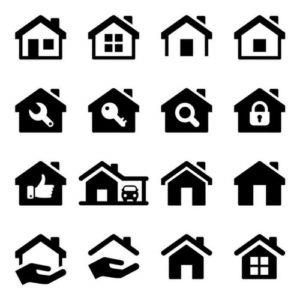 Some of the factors about your home that must be considered include:
Some of the factors about your home that must be considered include:
- The orientation of your home towards the sun. For example, a large window facing either the setting or rising sun will allow heat into the home more quickly.
- The number of windows, and whether or not they are normally open.
- The number of doors, and their construction and materials.
- The type of window can make a big difference. Double-paned hurricane windows are better at keeping the cold air in your home then thin, single pane glass.
- What type of roof is on your home.
- The construction of the walls, whether it is wood, frame, or a concrete shell.
- The location and number of interior doors needed to be considered when constructing the ductwork to allow consistent airflow.
Thermostats
Programmable ThermostatsOlder air conditioning could be turned on and off. Newer units often are installed with a programmable thermostat. This gives you more control over the temperature in your home, which can save money by optimizing energy usage.
For example, you can program your thermostat to give you a comfortable temperature of 75° while you are home, and yet maintain a higher temperature of 85° while you’re at work. This saves you money because you’re not using electricity to cool home that is not occupied.
Central air can also be installed with thermostats in different rooms of your home, this can allow you to raise the temperature in rooms that you’re not occupying. This saves energy because you’re not cooling spaces that nobody is using. For example, you could set the temperature up to 85° for a guest bedroom that is currently not occupied.
Wi-Fi ThermostatsNew or central air heating equipment has the option of installing Wi-Fi thermostats. These devices allow you to control the temperature in each room in your home from your mobile device or your desktop computer. They can intelligently adapt your air conditioning to your schedule by keeping track of when your home is unoccupied or occupied automatically.
Thus, if the home is empty, there’s no need to program anything. The Wi-Fi enhance system will change the temperature accordingly.
This improves energy efficiency even more, which will save you money on your electric bill. Additionally, since these systems conserve more energy, they are better for the environment.
Air Conditioning Contractors
Consider the following points when selecting your air conditioning contractor. Reputation: Ensure your contractor has a good reputation. You can start by looking online in places like Google Business, Yelp, and similar business sites. The Better Business Bureau is another great place to look because this site rates businesses on an A through F scale. When checking reviews, be sure to look them over carefully. Sometimes people write negative reviews because of a single bad employee or some personal reason that’s not related to the business that was done. Thus, it’s important to read them thoroughly and understand what they’re saying, and why they’re saying it.
Reputation: Ensure your contractor has a good reputation. You can start by looking online in places like Google Business, Yelp, and similar business sites. The Better Business Bureau is another great place to look because this site rates businesses on an A through F scale. When checking reviews, be sure to look them over carefully. Sometimes people write negative reviews because of a single bad employee or some personal reason that’s not related to the business that was done. Thus, it’s important to read them thoroughly and understand what they’re saying, and why they’re saying it.- Certified: Technicians from your air conditioning contractor should be North American Technician Excellence (NATE), which ensures that the technicians are of professional caliber, knowledgeable, skilled and they are professionals.
- Free consultation: Reputable air conditioning companies send a contractor out to your home to do a survey before making any estimations. Beware of getting estimates over the phone before someone has personally inspected your actual situation. Look at it this way: how could they know the condition of your air ducts, existing unit, the construction of your home, and other factors without actually looking?
- Inspections: When your A/C contractor inspects your home, expect it to take some time. A quick run through that only takes a few minutes is a warning sign. Additionally, follow them around as they inspect your entire air conditioning system including the ductwork, airflow, and the units themselves. They should be more than willing for you to watch them do their inspection, and to explain their findings as they go.
- Understand how to install higher efficiency equipment: It’s important that your contractor remain up-to-date on the newest regulations and the highest efficiency equipment. It’s a warning sign when a contractor attempts to steer you to a lower efficiency unit. This could mean they don’t understand or not trained in the more modern, better technology.
- Heating and cooling costs: Ask your contractor to explain how much money each type of model will cost you in energy charges. They should be able to give you estimates of those amounts.
- Professional Associations: Reputable contractors belong to professional associations because this helps them keep up-to-date with newer technologies, network with other professionals, and be updated on the newest techniques and regulations. Look for contractors that belong to Air Conditioning Contractors of America (ACCA). This organization helps professional contractors to be successful.
- Assumptions: Your contractor should not make assumptions about which unit you need, it’s the size or anything else related to your air conditioning. Their recommendations should be based on actual inspections, measurements, and information they’ve gathered from you.
- Prices: While the price is important, and there’s no need to pay for equipment you don’t need, it’s not the most important factor in determining the quality of your air conditioning unit and installation. Don’t look for the lowest price. Instead, look for contractors who meet most or all the considerations listed in this section, and once you found a few of those, then you can select based on price.
- Quality products: To ensure that your contractor sells quality products, ask if they sell Energy Star rated equipment. By choosing Energy Star, you will ensure that your equipment is of high quality and is energy efficient.
- Location: Your contractor should be willing, without reservation, for you to visit their office. Having an office let you know that the company has a base of operations, and intends to remain in business for the long-term. Establishing a long-term relationship with a contractor is vital to get maintenance under warranty and to service your unit if there’s a problem.
- Written bid: Any reputable HVAC contractor should submit written bids for work done which includes the equipment they propose, the labor that’s required, and the full cost.
- Ask about problems: While your home is being inspected, the contractor should ask you about any problems you had with your air conditioning unit. This is important to identify issues that might need to be fixed in the ductwork and elsewhere to ensure the unit operates with optimum efficiency.
- Professionalism: Reliable contractors act in a professional manner, which means they are prompt, courteous, and work out of a published location. They take the time to listen to your concerns and come up with solutions that address those issues. In addition, professional contractors understand that a new unit is not always needed. Sometimes an existing unit will work just fine if it’s repaired or parts are replaced.
- Licensed: Validate that your air conditioner company possesses all the appropriate and up to date federal, state, and local licenses for installing and maintaining air conditioning equipment.
Talking with your AirZero A/C Contractor
 Once you narrow down your contractors to a list of two or three of them, it’s time to have some conversations and perhaps even visit their office if possible.
Once you narrow down your contractors to a list of two or three of them, it’s time to have some conversations and perhaps even visit their office if possible.
Upgrading, repairing, or installing an air conditioning unit can be an expensive expenditure, so you want to make sure that you’re comfortable with your contractor before proceeding with any work.
Initially, talk to them on the phone and ask any questions that you might have. Describe your situation, and indicate whether you’re looking for a repair, an upgrade, or a new unit. They’ll probably want to schedule an on-site inspection of your unit to help you determine the best solution for your situation.
Once your HVAC contractor arrives at your home, take the time to talk to them, and get comfortable with how they operate, how they treat their customers, and their level of professionalism. They should take the time to listen and address any concerns that you might have.
The contractor should also perform an inspection of your unit. They should look at your whole system, to determine if there any problems that are hidden or not obvious. If you’re putting in a new system, they still need to do an inspection to determine where ducts should be installed, where the unit needs to be placed, and so forth.
Take the time to speak up and tell them what’s on your mind. After all, central air is a major investment, and you want to make sure that you're choosing the right professionals to help you. Ask questions, and they should be happy to answer them for you.
Observe their attitude and how they treat you. Remember, they’re acting as a consultant, and they are experts that you’re going to hire to help you create a cool and efficient environment.
Let them know your priorities. For example, mention if you have concerns about allergies or energy efficiency or anything else. This will help your contractor narrow down to the right equipment and solution.
Some questions you might ask include:
- In an existing installation, is the ductwork properly sealed?
- What are the advantages and disadvantages of different manufacturers?
- What effect does the orientation of your home, and the placement of windows and doors, have on your central air system?
- Are your doors and windows properly sealed?
- Anything else that’s on your mind.
Top Air Conditioning Manufacturers
- Amana: Amana was founded in 1934 by George Foerstner in Middle Amana, Iowa. They are a leading air conditioner manufacturing company.
- American Standard: This company produces top-of-the-line air conditioning units.
- Bryant: For over 100 years, Bryant has manufactured furnaces, air conditioners, and other equipment. Everything they produce is very high quality and is extremely durable and reliable.
- Carrier: Carrier was founded in 1902, built on Willis Carrier’s invention of modern air conditioning. They manufacture residential and commercial air conditions for domestic and global markets.
- Goodman: Goodman is a big name in home cooling that’s energy-efficient. They build A/C units for both residential and commercial clients.
- Lennox: Manufacturing furnaces and other equipment since 1895, Lennox specializes in heating and cooling systems for both commercial and residential clients.
- Rheem: Richard and Donald Rheem founded this company in 1925 in Emeryville, California. Rheem manufactures heating, cooling, water heating, pool, and spa heating as well as commercial refrigeration products.
- Ruud: One of the largest A/C manufacturers in North America, this company produces high-efficiency and long-lasting units.
- Trane: Trane was founded in 1885 in La Crosse, Wisconsin, and was incorporated in 1913. It’s been in business for over 120 years, providing high-quality air conditioners for commercial and residential clients.
- York: Founded in 1874 in York, Pennsylvania, York manufactured ice machines in order to replace shipping ice from the Great Lakes. A few years later, they began producing air conditioning, and are now one of the major A/C companies.
Top central Air Conditioning Units
 The top-rated air conditioning units are listed below:
The top-rated air conditioning units are listed below: - Trane XL20i: This high-efficiency air conditioning unit offers up to 20 SEER performance, humidity control, and are environmentally friendly. Two compressors are used to maximize efficiency: a smaller compressor is operated normally, and a larger compressor is only used to rapidly cool in the case of a drastic change in temperature.
- Amana ACXC18: This system is inexpensive, in comparison to other units, it is quiet and offers up to 19 SEER performance.
- Dave Lennox Signature Collection: This line of air conditioners offers energy efficiency, even in extremely hot or cold weather, and has an option for solar power implementation.
- Carrier Infinity Series: These units have a SEER rating over 20, are quiet, dehumidifying the air, and are very reliable.
Mitsubishi Ductless Mini-Split A/C System
Mitsubishi manufacturers a line of ductless mini-split air conditioning systems which are more cost-effective than larger units. They are easy to install, energy-efficient, and provide good control. Most importantly, they do not require air ducts to be installed.
Subscribe to Air Zero's Blog



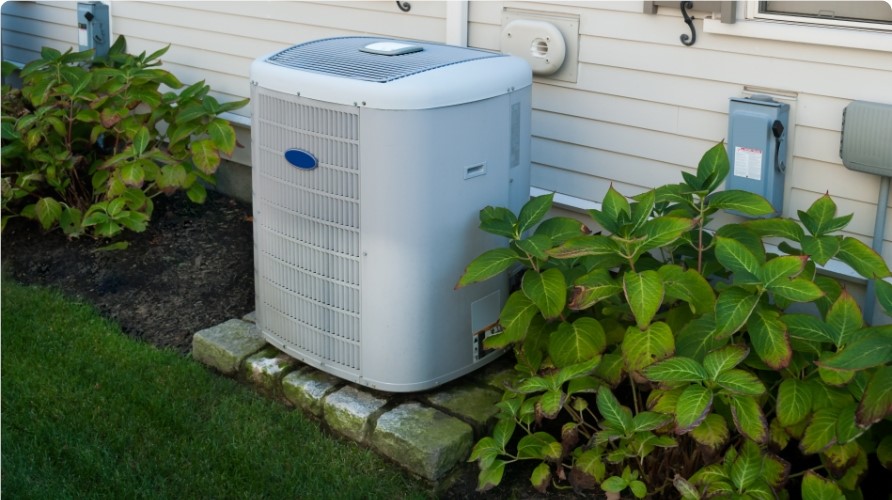

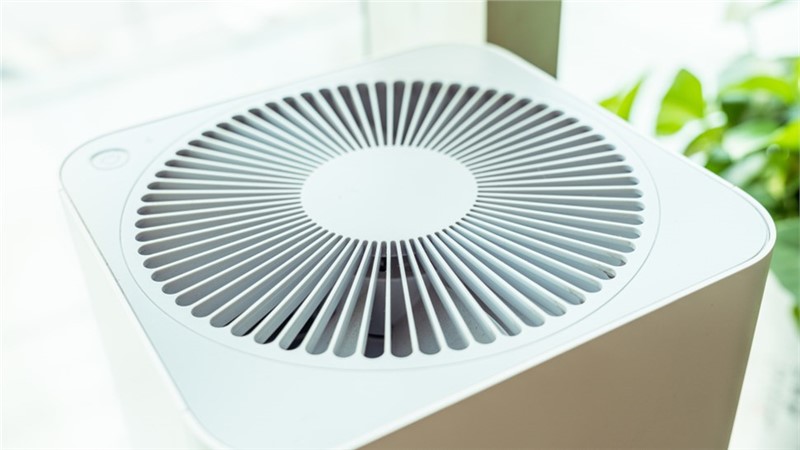
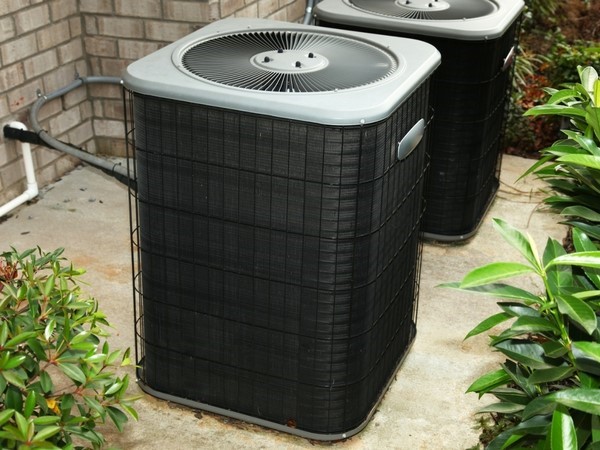
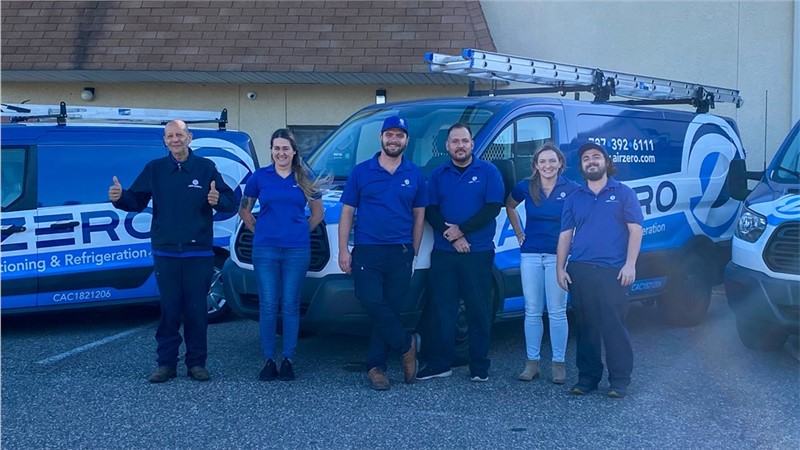

Comments